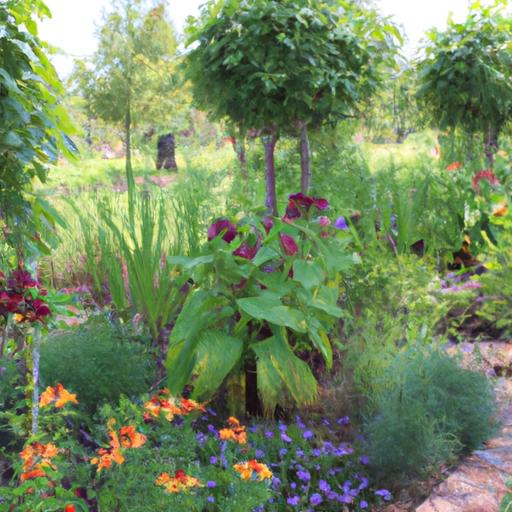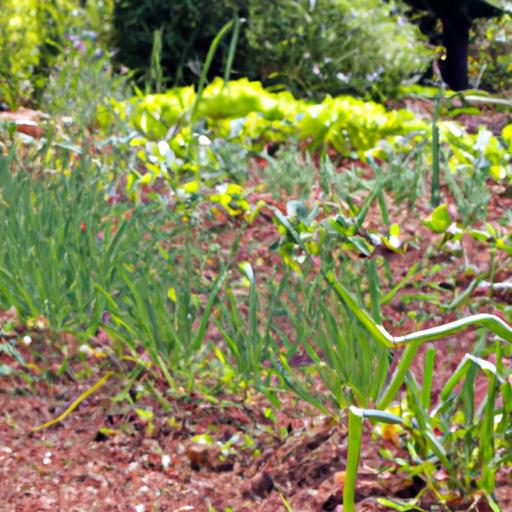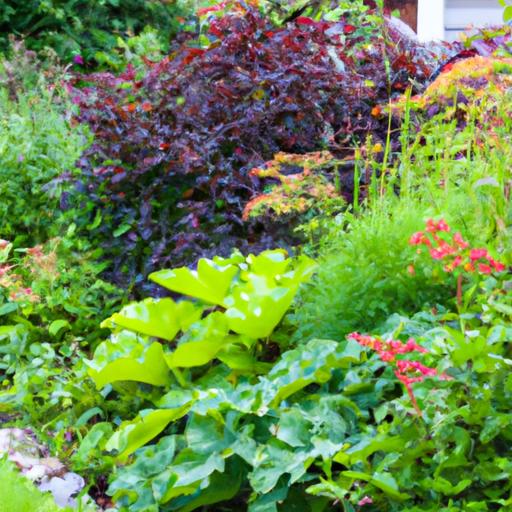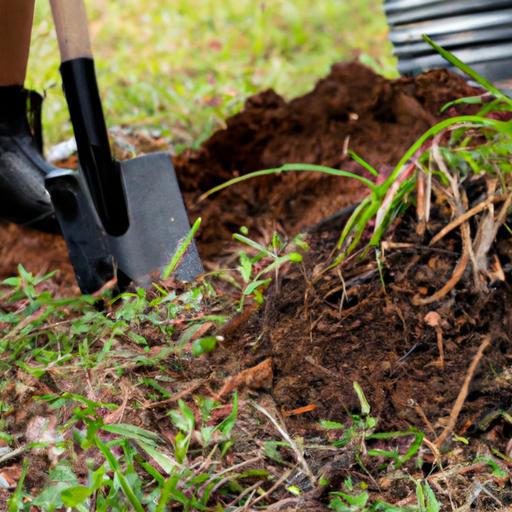Introduction
Welcome, fellow gardening enthusiasts! Are you ready to embark on a journey to uncover the secrets of gardening success in Dallas, Texas? Today, we’ll dive into the fascinating world of gardening zones and explore the unique climate that makes Dallas so distinctive. So, grab your gardening gloves and let’s dig in!
A. Importance of Understanding Gardening Zones
Picture this: you’ve just picked out a beautiful plant, eagerly planted it in your garden, only to watch it wither away in a matter of days. Heartbreaking, isn’t it? Well, fear not! Understanding gardening zones is the key to avoiding such disappointments and cultivating a flourishing garden that thrives in your specific region.
Gardening zones act as your green thumb’s best friend, providing invaluable guidance on the types of plants that will thrive in your local climate. By familiarizing yourself with these zones, you can make informed decisions about which plants to grow, ensuring they receive the necessary conditions for optimal growth and vitality.
B. Overview of Dallas, Texas and Its Unique Climate
Now, let’s turn our attention to the vibrant city of Dallas, nestled in the heart of the Lone Star State. Known for its scorching summers and mild winters, Dallas boasts a subtropical climate that presents both challenges and opportunities for gardeners.
With an average annual temperature of around 65°F, Dallas experiences hot, humid summers and relatively mild winters. This unique climate creates a gardening environment that requires careful consideration to ensure your plants thrive year-round.
As we journey deeper into this article, we’ll uncover the secrets of Dallas’ gardening zone and explore the suitable plants that will flourish in this Texan oasis. So, my green-thumbed friend, let’s explore the wonders that await us in Dallas’ gardening zone!
What is a gardening zone?
A. Definition and Purpose of Gardening Zones
In our quest to unlock the secrets of Dallas’ gardening zone, it’s essential to understand the very foundation of gardening zones themselves. So, what exactly is a gardening zone?
Gardening zones, also known as plant hardiness zones, are geographical regions that categorize areas based on their climate conditions and suitability for different types of plants. These zones are determined by various factors such as temperature ranges, frost dates, and growing seasons.
The purpose of gardening zones is to provide gardeners with a valuable tool to assess which plants are most likely to thrive in their specific region. By understanding your gardening zone, you can make informed decisions about which plants are best suited for your area’s climate, ensuring higher chances of success in your gardening endeavors.
B. How Gardening Zones Help Determine Suitable Plants for Specific Regions
Imagine trying to grow tropical plants in an Arctic tundra or cold-weather crops in a sweltering desert. It’s like asking a fish to climb a tree – doomed from the start, right? This is where gardening zones come to the rescue!
Gardening zones act as a roadmap, guiding gardeners to select plants that are well-adapted to the specific climate conditions of their region. They provide valuable information about temperature extremes, average frost dates, and the length of the growing season, helping you choose plants that can withstand and thrive in your area’s unique environment.
By aligning your plant choices with your gardening zone, you’re setting yourself up for success. You’ll be able to select plants that are more likely to survive the winter, withstand summer heatwaves, and overall flourish in your garden. Gardening zones empower you to create a harmonious ecosystem where plants and climate work hand in hand for a bountiful and beautiful garden.
Now that we’ve grasped the essence of gardening zones, let’s dive deeper into Dallas, Texas’ gardening zone and uncover the green wonders that await us in the heart of Texas!
Understanding the USDA Plant Hardiness Zone Map
A. Explanation of the USDA Plant Hardiness Zone Map
Let’s unravel the mysteries of the USDA Plant Hardiness Zone Map, a valuable tool for gardeners across the United States. This map, developed by the United States Department of Agriculture (USDA), provides crucial information about the climatic conditions in different regions, helping gardeners determine which plants are best suited for their area.
The USDA Plant Hardiness Zone Map divides the United States into several zones based on average annual minimum temperatures. Each zone is assigned a unique number, allowing gardeners to identify the specific climate characteristics of their region. Understanding this map is like having a compass that guides us towards gardening success!
B. How the Map is Divided and Categorized
Now, let’s take a closer look at how the USDA Plant Hardiness Zone Map is divided and categorized. The map consists of thirteen main zones, labeled from 1 to 13, with each zone representing a specific temperature range. These zones are further divided into subzones, denoted by letters (a and b), providing even more precise information about the climate.
To determine the appropriate gardening zone, we need to consider both the main zone and the subzone. For instance, Dallas, Texas falls under Zone 8a, characterized by an average minimum temperature range of 10°F to 15°F (-12°C to -9°C). This valuable information helps us choose plants that can withstand the climatic conditions unique to Dallas.
C. Factors Considered in Determining Gardening Zones
You might wonder, what factors are considered when determining these gardening zones? Well, the USDA takes into account various elements, including average minimum temperatures, frost dates, and microclimates. By analyzing long-term climate data and regional weather patterns, the USDA creates a comprehensive and reliable classification system that aids gardeners in selecting appropriate plants for their particular area.
Now that we have unraveled the secrets of the USDA Plant Hardiness Zone Map, we can delve deeper into discovering the gardening zone specific to Dallas, Texas. So, my fellow green thumbs, let’s continue our journey and unlock the treasure trove of information that awaits us!
Identifying Dallas, Texas’ Gardening Zone
A. Introduction to Dallas’ Climate and Geographical Location
Before we uncover the gardening zone of Dallas, let’s take a moment to appreciate the unique climate and geographical location that influence its horticultural landscape. Dallas finds its place in the warm embrace of North Central Texas, where it enjoys a semi-arid climate with distinctive characteristics.
Blessed with long, hot summers and mild winters, Dallas experiences an average annual temperature of approximately 66°F. The city’s location in the southern region of the United States contributes to its subtropical climate, making it an ideal habitat for a diverse range of plants.
B. Importance of Identifying the Gardening Zone in Dallas
Now, you might wonder, why is it crucial to identify the gardening zone in Dallas? Well, my gardening companion, understanding your specific gardening zone is the first stepping stone towards garden success. By knowing your zone, you can make informed decisions about which plants will thrive best in your area, avoiding the disappointment of seeing your beloved greens struggle to survive.
Moreover, identifying the gardening zone in Dallas allows you to tailor your gardening practices to the unique needs of the region. From watering schedules to soil amendments, each aspect of gardening can be optimized when armed with the knowledge of your gardening zone.
C. How to Determine Dallas’ Gardening Zone Using the USDA Map
Now, let’s unravel the mystery of determining Dallas’ gardening zone using the invaluable USDA Plant Hardiness Zone Map. This comprehensive map divides the United States into various zones based on their average minimum winter temperatures.
To identify Dallas’ gardening zone, locate the city on the USDA map and pinpoint the corresponding zone number. This number will provide crucial insights into the suitable plants that can thrive in Dallas’ climate.
Remember, my fellow gardeners, understanding your gardening zone is the key to unlocking a flourishing garden tailored to the unique conditions of Dallas, Texas. So, grab your magnifying glass and let’s embark on a journey to uncover the secrets of Dallas’ gardening zone!
Dallas, Texas’ Gardening Zone and Suitable Plants
A. Overview of the Specific Gardening Zone for Dallas
Now that we’ve laid the groundwork, let’s dive straight into the specifics of Dallas’ gardening zone. According to the USDA Plant Hardiness Zone Map, Dallas falls under Zone 8a, showcasing its unique climate characteristics and planting conditions. This means that Dallas experiences an average minimum temperature range of 10°F to 15°F (-12°C to -9°C).
B. Characteristics and Limitations of the Zone
Understanding the characteristics and limitations of Zone 8a is essential for successful gardening in Dallas. While Dallas enjoys a long growing season, it’s important to be mindful of the occasional cold snaps that can occur during winter. Frost can pose a challenge, so selecting plants that can withstand occasional dips in temperature is crucial.
Additionally, Dallas’ scorching summers call for plants that can tolerate and thrive in high heat and humidity. Drought-resistant varieties that can withstand the intense Texan sun will be your garden’s best companions.
C. Recommended Plants and Gardening Practices for Dallas’ Zone
Now, let’s get to the exciting part – the recommended plants and gardening practices for Dallas’ gardening zone! Embrace the beauty of native Texan flora by incorporating plants like Texas sage, black-eyed Susans, and lantana into your garden. These hardy perennials not only add vibrant pops of color but also thrive in the local climate.
To combat the intense heat, consider adding heat-loving vegetables like tomatoes, peppers, and okra to your garden. These sun-soaked delights will reward you with a bountiful harvest throughout the warm months.
To ensure your garden thrives, it’s crucial to practice proper watering techniques and soil management. Water deeply but infrequently, allowing the soil to dry out slightly between waterings. Incorporate organic matter into your soil to improve its moisture retention and nutrient levels.
Remember, gardening in Dallas’ Zone 8a offers an array of possibilities, but it’s important to be mindful of the specific needs of your plants and the climatic conditions they will face. By selecting suitable plants and implementing smart gardening practices, you’ll create a garden that flourishes in the heart of Texas.
Now that we’ve unlocked the secrets of Dallas’ gardening zone, let’s move on to the conclusion, where we’ll recap the importance of understanding gardening zones and summarize our journey through Dallas’ unique climate.
Conclusion
As we wrap up our gardening adventure through the intriguing world of Dallas, Texas’ gardening zone, I hope you’ve gained valuable insights into the importance of understanding your local climate and its impact on your plants’ well-being.
Through our exploration, we’ve learned that identifying Dallas’ gardening zone is crucial for selecting the perfect plants that can withstand the city’s unique subtropical climate. By referring to the USDA Plant Hardiness Zone Map, you can unlock the secrets of gardening success and create a thriving oasis in your own backyard.
Remember, my fellow gardeners, selecting plants that are well-suited to your gardening zone ensures higher chances of success, healthier plants, and bountiful harvests. Embrace the nuances of Dallas’ gardening zone and adapt your gardening practices accordingly to create a flourishing haven of beauty and tranquility.
So, whether you’re dreaming of vibrant flowers, luscious fruits, or a lush green landscape, Dallas’ gardening zone has something special in store for you. Let us embrace the joy of gardening, nurturing nature’s wonders, and creating a harmonious connection with the earth.
Now, armed with the knowledge of Dallas’ gardening zone and a passion for cultivating life, it’s time for you to embark on your own gardening journey. Prepare your soil, choose your plants wisely, and let your green thumb guide you to gardening success in the magnificent city of Dallas, Texas.
Happy gardening, my friends, and may your garden bloom with the vibrant colors of nature’s delight!




